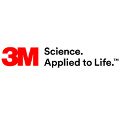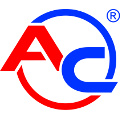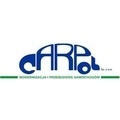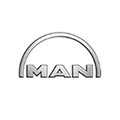07_Real estate tax in the automotive industry
Just like in many other production industries also in the automotive industry real estate tax (“RET”) might be a significant fiscal burden. Even though, in many cases less attention is paid to this tax than to taxes such as income tax (“CIT”) or VAT. There are several reasons for this.
The most important is the close connection of RET with construction law which means that a proper RET reconciliation requires a certain degree of construction law knowledge, which in case of Financial or Accounting Departments responsible for tax reconciliations does not always occur. The second thing is that RET is an annual tax, which in case of legal persons is declared once a year and then settled in monthly instalments. This means, that unlike CIT or VAT, there is a limited necessity of an ongoing involvement in verification of the correctness of the RET settlement, because there are less events which require an analysis from the perspective of their tax consequences. It is also because of these reasons why in many cases the RET settlement is based on automatic transferring of the lists of objects subject to taxation in previous years and checking the current tax rates. This is a mistake because just like in other taxes, also in RET there are legislative changes which may significantly influence the amount of RET liability.
An example of such a change which may have a positive impact on entrepreneurs from the automotive industry is the extension as of 1st January 2017 of the tax exemption for railway infrastructure. After the legislative changes it is expressly stated that railway sidings (Polish: “bocznica kolejowa”) constitute railway infrastructure and objects such as railway sidings are often located on automotive production plants. Moreover, the exemption now covers also railway infrastructure buildings and the wording of the exemption leads to a conclusion that also whole plots of land (Polish: “działka ewidencyjna”) where the railway infrastructure is located are subject to the exemption and not only the parts of land which are actually used for the purposes of railway infrastructure.
Above it has also been mentioned that RET is related to construction law. This connection is based mainly on the fact that buildings and constructions which are subject to RET are defined by reference to construction law. At the same time, the usable floor area of buildings (being the tax base for buildings) is defined by tax lawi.e.the Act on Local Taxes and Charges which regulates RET. The usable floor area defined in this act is however different than similar definitions on the grounds of construction law. Nonetheless, in practice it most often occurs that entrepreneurs determine usable floor area for RET purposes by referring to construction documentation or regulations which may lead to inconsistencies while the tax base of buildings should be established solely on the basis of the definition provided for in the Act on Local Taxes and Charges. In Practice, most often it turns out that building measurements conducted in compliance with the “tax definition” result in a smaller usable floor area than measurements based on construction law regulations giving a chance of tax savings. Considering the fact that in the automotive industry RET from buildings usually has a big share in the overall RET amount, the potential tax savings may be significant.
When discussing RET one cannot forget about the big influence that court judgments have on the tax practice. The court verdicts are very opulent (only from the beginning of 2017 more than 1200 court verdicts related to RET have been issued) but unfortunately in many cases they are not uniform. A good example is the issue of taxation as constructions various objects and installations located in buildings. Generally, the dominating standpoint is that such objects should be treated as parts of buildings in which they are located and hence they should not be separately taxed as constructions. On the other hand, there are court verdicts which in particular cases (production lines, containers) state that such objects or their construction parts may be subject to taxation even if they are located in buildings. Eventually, in many cases determination whether the tax is due or not depends on nuances of the background of each case. Therefore, proper qualification of particular objects for RET purposes requires not only tax and construction law knowledge, but also orientation in current court verdicts.
In conclusion, RET in spite of its seemingly uncomplicated character is a relatively complex tax, which for a correct settlement requires comprehensive knowledge. Fortunately enough, practice shows that usually identified inconsistencies result in tax overpayment. It is also worth mentioning that that the law provides for a possibility to file amended tax returns and an application for a tax overpayment up to 5 years backwards. Since, usually RET settlements aren’t adjusted for several years also potential inconsistencies may by duplicated throughout several years and in consequence the amount of potential overpayment could be high.
Contact.
Michał Hankus, Manager, Tax, PwC

























































